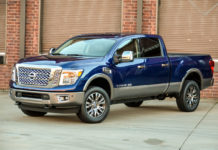How long should the world's super-rich have to wait before they can buy a Ferrari? The answer has as much to do with how luxury-goods companies create an aura of exclusivity as it does with the global economy's shifting winds minting more millionaires in places like China, Russia and the Middle East.
For years, Ferrari SpA, a division of Italy's Fiat SpA, had a standard 12-month waiting list for a new car. That was long enough to make prospective Ferrari owners drool with anticipation, but not too long to drive them toward competitors such as Porsche AG or Volkswagen AG's Lamborghini, where waiting times are usually shorter.
The year-long waiting period also allowed Ferrari to achieve a rare feat in the automobile industry: the resale value of its cars, pushed up by loyal collectors and dealers, rarely depreciated. So confident was Ferrari Chairman Luca Cordero di Montezemolo of this system that in 1999 he boasted the company would never make more than 5,000 cars a year. At the time it was making slightly more than 4,000, and most of its customers were in three markets: North America, Italy and Germany.
Since then, however, the math and the market logic underlying Ferrari's approach have been thrown out the window. The escalating desire to own a Ferrari among the newly rich of Asia, the Middle East and Russia has yanked the company's clubby ways out of whack.
Ferrari made 5,700 cars last year, and the number this year will crest above 6,000. Even so, average waiting times in Hong Kong, the United States, Australia and England have soared to around 24 months or more. In Italy and Germany, the wait hovers around 18 months. (Ferraris currently retail from $190,000 for a F430 to $280,000 for a 599 GTB Fiorano.)
“We realized a few years ago that we needed to rethink this,” says Andrea Bozzoli, Ferrari's commercial and marketing director. “We started to consider 18 months ideal, but now we can't even keep up with that.” What changed, Ferrari executives say, was a surge in demand in emerging markets. The company now sells more than 100 cars annually in the United Arab Emirates and more than 150 in China — two markets where sales were virtually nonexistent only a decade ago. Ferrari will ship 60 cars to Russia this year, only three years after opening its first dealership there.
Michael Mastrangelo, a Ferrari dealer in Spring Valley, N.Y., since the 1970s, says that in the New York area in recent years, the wait has averaged three years for a new Ferrari. Last year, when Wall Street bankers were earning record piles of cash, Mr. Mastrangelo couldn't reap the benefits. Since Ferrari's headquarters imposes strict limits on how many cars it ships to each dealer, Mr. Mastrangelo's suburban New York City dealership couldn't sate the demand — especially as repeat customers always come first.
“It's very hard to come into a dealership right now and put in a new order if you are not already a customer,” he says. “When I get a young person, what I say is, 'Let's start with a used car' . . . It's kind of like getting into a club.”
Satisfying the desires of these wealthy new consumers goes beyond a hot set of wheels. High-end fashion and jewelry brands, such as Gucci Group NV and watchmaker Patek Philippe SA, are also retooling product lines and rethinking marketing. While in mature markets, the target consumers are women, men are heavier-spenders in many emerging markets, so fashion brands have adjusted their message.
Ferrari has always been skittish about making too many cars, afraid that even a modest boost in volume could damage its refined image and aspirational appeal. Even this year's increase of 10% above last year's 5,700 cars will strain its one factory. All of its cars are customized, and its specialized work force spends years in training before joining the assembly line. Porsche, by contrast, makes around 100,000 cars a year. For a customized car, customers must wait between three and six months, according to Ferrari.
Now, coping with the sudden demand from new quarters is proving awkward. “If you go to some Arab countries, where customers want a car, or more than one, immediately, it can get sticky,” says Ferrari's Mr. Bozzoli. Ferrari, he says, tries to make special accommodations for members of royal families and tries to get used cars to tide over important customers until they can get a new one. Still, there is a “feeling of mistrust about the waiting list,” says Mostyn Heard, the president of the Ferrari owners club of the United Arab Emirates
“People think that you might get moved up or down on the list depending on whether you are a V-VIP [Very-Very Important Person] or merely a successful manager,” says Mr. Heard, who manages properties for the ruler of Dubai, Sheikh Mohammed bin Rashid Al Maktoum, and expects to wait three years before his new 599 model will be delivered.
Ferrari admits that there was at least one such case of waiting-list tampering but that this no longer occurs. There is another problem with multiyear waiting lists, though: They can foster a gray market in which a person who takes delivery of a new Ferrari immediately flips it to an even hungrier buyer for sometimes double the price. That weakens Ferrari's ability to control its pricing and resale value, and keep track of its coveted customers.
It's a similar problem that has plagued high-end fashion labels for years: Designs that hit stores in Paris or Milan first would be snapped up by dealers who resold them in boutiques in Asia. Big luxury-goods conglomerates from Gucci to LVMH Moët Hennessy Louis Vuitton SA have since tightened their supply chains to ensure new lines hit their global store network at the same time and, when possible, at the same price. Of the roughly 20 Ferrari F430s circulating in the UAE, only about three were sold through the local dealership, estimates Mr. Heard. The rest were bought off mostly Europeans for what is often a substantial premium.
Ferrari is trying to stem the problem by policing waiting lists from dealers world-wide. Getting on the list usually requires fronting a portion of the car's sales price and providing proof of sufficient funds to cover the rest. Moreover, Ferrari tries to weed out duplicate names or people it thinks might be posing as a front for another buyer, says Amedeo Felisa, Ferrari's general manager.
Meanwhile, Ferrari is trying to keep up with the demands of its new consumers. At the Shanghai auto show in April, Ferrari served cocktails to a select group of prospective buyers atop a podium surrounded by a high glass wall while gawkers snapped photographs.
Among the potential clients was Mr. Liu, a 35-year-old financial entrepreneur who declined to provide his full name. Mr. Liu, who already owns a BMW 750 and a Land Rover, said he was willing to pay 4 million yuan ($520,000) for a Ferrari 612 Scaglietti, but he didn't want to be put on any waiting list.
When salespeople tried to steer him toward a lower-priced car that would be more readily available, Mr. Liu insisted on waiting for the 612 , snapping: “I want it as soon as possible.”








